Christopher Ketcham writes on our continuing anthropogenic (human-caused) mass species extinction, and the ineffectual and often misguided attempts at appeasement for the destroyers of wilderness and consumers of the Earth’s bounty. E.O. Wilson’s push for parks and wilderness connected by corridors, half for us, half for them, might just be the answer.
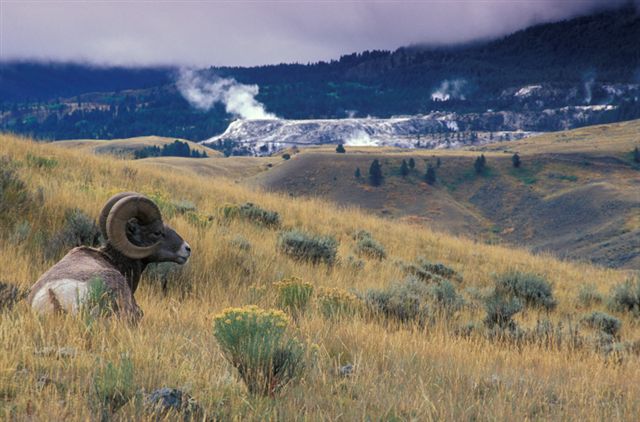

Mass Species Extinction, the New Environmentalism and the Cancer in the Wilderness
By Christopher Ketcham, Published in CounterPunch
The word is in from the wildlife biologists. Say goodbye in North America to the gray wolf, the cougar, the grizzly bear. They are destined for extinction sometime in the next 40 years. Say goodbye to the Red wolf and the Mexican wolf and the Florida panther. Gone the jaguar, the ocelot, the wood bison, the buffalo, the California condor, the North Atlantic right whale, the Stellar sea lion, the hammerhead shark, the leatherback sea turtle. That’s just North America.
Worldwide, the largest and most charismatic animals, the last of the megafauna, our most ecologically important predators and big ungulates, the wildest wild things, will be the first to go in the anthropogenic extinction event of the Holocene Era. The tiger and leopard and the elephant and lion in Africa and Asia. The primates, the great apes, our wild cousins. The polar bears in the Arctic Sea. The shark and killer whale in every ocean. “Extinction is now proceeding thousands of times faster than the production of new species,” biologist E.O. Wilson writes. Between 30 and 50 percent of all known species are expected to go extinct by 2050, if current trends hold. There are five other mass extinction events in the geologic record, stretching back 500 million years. But none were the result of a single species’ overreach.
E. O. Wilson, the great evolutionary biologist, recently calculated that the only way humanity could stave off a mass extinction crisis, as devastating as the one that killed the dinosaurs 65 million years ago, would be to set aside half the planet as permanently protected areas for the ten million other species. “Half Earth,” in other words, as I began calling it—half for us, half for them. A version of this idea has been in circulation among conservationists for some time. — Tony Hiss, Smithsonian Magazine
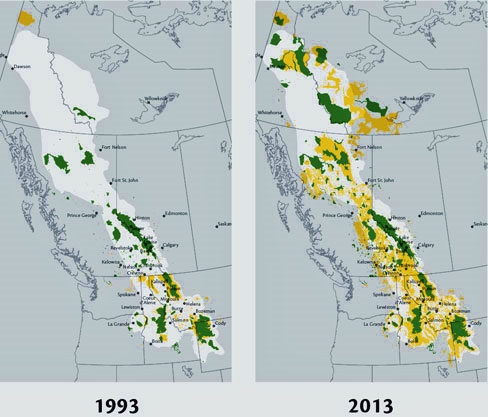

STORY: Wildlife Crossings: Animals Survive with Bridges and Tunnels
I’ve found conversation with my biologist sources to be terribly dispiriting. The conversation goes like this: Homo sapiens are out of control, a bacteria boiling in the petri dish; the more of us, demanding more resources, means less space for every other life form; the solution is less of us, consuming fewer resources, but that isn’t happening. It can’t happen. Our economic system, industrial consumer capitalism, requires constant growth, more people buying more things. “I will go so far as to say [that] capitalism itself may be dependent on a growing population,” writes billionaire capitalist blogger Bill Gross, Forbes magazine’s Bond King. “Our modern era of capitalism over the past several centuries has never known a period of time in which population declined or grew less than 1% a year.” Growth for growth’s sake, what Edward Abbey called the ideology of the cancer cell.
When I started teaching environmental law and policy, I thought I would work with the next generation of extraordinary environmentalists. I don’t. My students are extraordinary, but many see themselves as “corporate social responsibility consultants,” “ecosystem service managers,” “sustainability leaders,” “industrial efficiency experts,” maybe “clean energy entrepreneurs” — not environmentalists. They avoid that label because they associate it with stalled progress on the issues they care about. But this reinvention is a losing strategy. — Joshua Galperin, L.A. Times
The biologists, who in my experience tend to loathe the Bill Grosses of the world, begin to sound like revolutionaries. The most radically inclined among them – their goal to save some part of the planet from human domination and keep it wild and free (free of bond managers for sure) – agree that human population will have to halt entirely, and probably decline, in order to protect non-human biota. Then the biologists begin to sound like misanthropes, and they shut their mouths.
“What’s wrong with misanthropy?” I ask Leon Kolankiewicz, a former U.S. Fish and Wildlife Service biologist who has written extensively about the human population footprint and its disastrous effect on biodiversity. “The human race,” I tell him, “has proven to be a bunch of assholes.”
Kolankiewicz laughs. My attitude, he observes, is not a very good tool for marketing conservation, given that the market, after all, is made up of people. We’re supposed to make biodiversity appeal to the buyer, the public, as something useful. We talk about ecosystem services – ecosystems that service us. “It’s a completely wrongheaded approach to conservation, of course,” says Kolankiewicz. “It’s raw anthropocentrism. There’s a lot of nature that isn’t particularly useful to people.”
“And so that never again can we have the chance to see ourselves single, separate, vertical and individual in the world, part of the environment of trees and rocks and soil, brother to the other animals, part of the natural world and competent to belong in it. Without any remaining wilderness we are committed wholly, without chance for even momentary reflection and rest, to a headlong drive into our technological termite-life, the Brave New World of a completely man-controlled environment.” — Wallace Stegner, Wilderness Letter, 1960
STORY: Rewilding the Human Family: Staying Interconnected in Modern Times
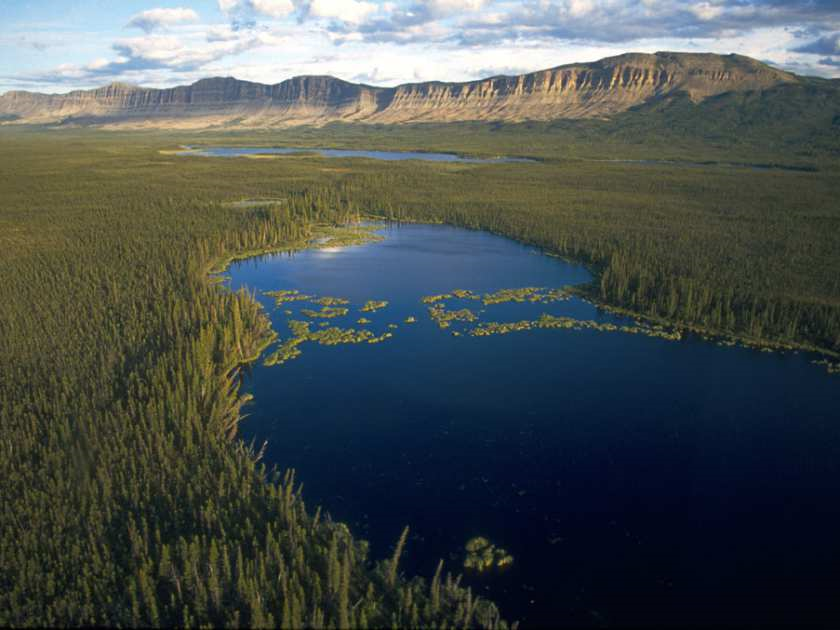

Industrial-strength Homo sapiens could function without much trouble on a vastly simplified, even depauperate, planet, one wiped nearly clean of its fantastic variety of life. I read in Science magazine not long ago, for example, that Earth could lose 90 percent of the species that produce oxygen – not 90 percent of total biomass, mind you, just the diversity of the oxygen producers – and this would hardly make a dent in our modern lives. One of the conservation statistics that Kolankiewicz had encountered in recent years, one that he said “just blows me away,” shows that the combined biomass of the living 7.2 billion human beings, along with the few species of animal we have domesticated – dogs, cats, cattle, sheep, pigs, chickens – now constitutes at least 95% of the entire biomass of all extant terrestrial vertebrates on Earth. That is, all of the living specimens of wild mammals, birds, amphibians, and reptiles, more than 20,000 species in total, constitute a mere 5% of the aggregate living cellular tissue of all vertebrates. “Almost total usurpation of the biosphere for the benefit of one species alone,” says Kolankiewicz. “It’s ecological imperialism. Given this tragic reality, how can any sentient, caring person not be a bit of a misanthrope?”
We talk about the remaining places on Earth where the imperial species has not usurped the biosphere, where the bears and the wolves and the tigers roam, where the little babbling bipeds with their iPhones might get eaten, and we agree that these places can be called wilderness. We agree that the language of the 1964 Wilderness Act best defined those places: “Where the earth and its community of life are untrammeled by man,” where the land retains “its primeval character and influence.” Observe the original meaning of that word, trammeled. It means to shackle, to hinder, to chain, to make un-free. An untrammeled ecosystem is one where man may be present but does not dominate, where the willed self-propelling processes of nature have not been subjugated entirely to human ends. (Kolankiewicz observes that it is from willed that etymologically we get the word wild.)
Wilderness, among its other purposes, is to be a refuge for wild animals and plants, their evolution to remain unmolested and unhampered. There is a practical argument here – the preservation of a genetic pool evolving without help or hindrance from us (as we busily meddle with and wipe out genetic diversity elsewhere) – and a transcendent one, related to the not-so-transcendent fact that when we do away with wilderness we are also doing away with the crucible of natural forces which birthed our ancestors out of the muck and which shaped our character as a species. Without wilderness, we lose two million years of evolutionary heritage. We lose our deep-seated and long-standing relations with the non-human; we lose the awareness, the consciousness, of a natural environment not arranged entirely for human convenience. We lose our capacity, in the words of Howard Zahniser, the primary author of the Wilderness Act and its principal mover, “to know ourselves as the dependent members of a great community of life…to know the wilderness is to know a profound humility, to recognize one’s littleness, to sense dependence and interdependence, indebtedness, and responsibility.”
Kolankiewicz tells me to read Wallace Stegner’s famous Wilderness Letter of 1960, issued as a public rebuke to the Kennedy administration. I tell him I know it well. “Without any remaining wilderness,” wrote Stegner, “we are committed wholly, without chance for even momentary reflection or rest, to a headlong drive into our technological termite-life, the Brave New World of a completely man-controlled environment.”
Kolankiewicz admits to a strain of Luddism in his blood, a dislike of technocrats, and certainly he is not the kind of environmentalist one finds salaried in the cubicles of the Big Greens in DC – by which I mean the Nature Conservancy, the Sierra Club, the Wilderness Society, the Natural Resources Defense Council, the Environmental Defense Fund, and the half-dozen other multi-billion-dollar enviro-nonprofits. Peter Kareiva, the chief scientist at the Nature Conservancy, is more typical of the breed. He’s an optimist, he’s people-friendly, full of bright ideas that promise hopeful partnerships with corporate business, expressive in his love of technological progress as the ultimate fix to conservation troubles, unabashed in the belief that good management applying the scientific method can handle any challenge no matter how frightful, and thoroughly dismissive of what he calls “the wilderness ideal.”
If this is environmentalism at all, it is “desperate environmentalism,” characterized not by awe, enthusiasm and enjoyment of nature but by appeasement. It relies on utilitarian efficiencies, cost-benefit analyses, private sector indulgences and anthropocentric divvying of natural resources. It champions voluntary commitments, tweaks to corporate supply chains, protection not of the last great places on Earth but of those places that yield profit or services. From market-friendly cap-and-trade to profit-driven corporate social responsibility, desperate environmentalists angle for the least-bad of the worst options rather than the robust and enforceable safeguards that once defined the movement. — Joshua Galperin
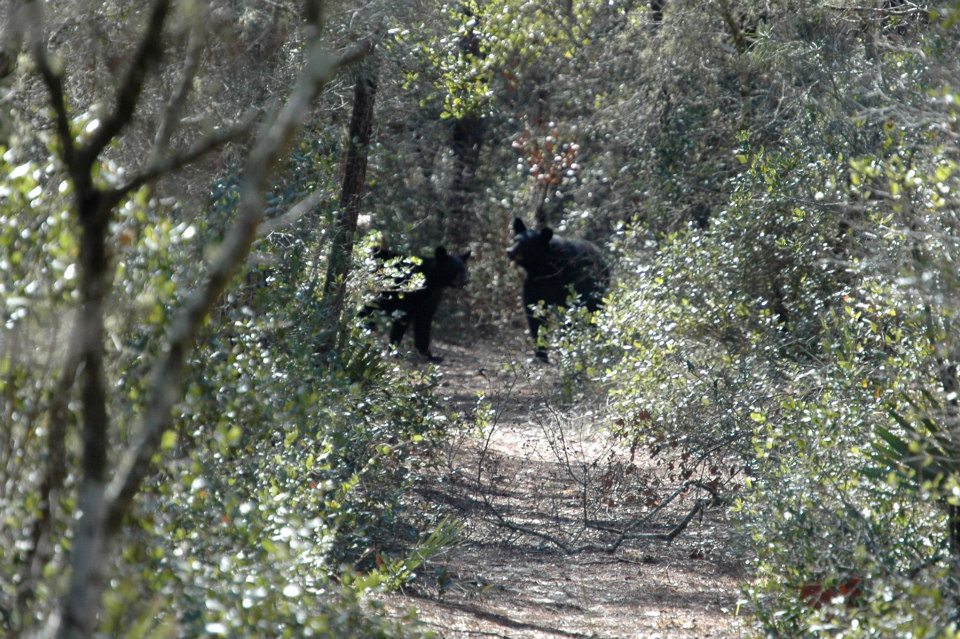

In the new geologic era scientists are calling the Anthropocene – an era in which “humans dominate every flux and cycle of the planet’s ecology and geochemistry” – Kareiva believes that conservation has reached a threshold from which there is no turning back. Climate change, a world-encircling shroud of domination, is the most pressing fact of the Anthropocene. There is no place untrammeled by man, no ecosystem self-willed, and wilderness is therefore dead. Embrace the painful truth, says Kareiva: We are de facto planetary managers, and though hitherto we have been lousy at the job of management – selfish and self-aggrandizing, thoughtlessly destructive – we will not cease to dominate. And this is a good thing, as the very consciousness of our power as totalitarian managers of nature may be a blessing: It compels us not to question this power – for Kareiva it is unquestionable – but to become wise managers, like Plato’s philosopher kings, full of noblesse oblige, tyrannical but enlightened. So much for profound humility.
Let’s hear at length what Kareiva has to say about this “new vision for conservation”:
Conservation should seek to support and inform the right kind of development – development by design, done with the importance of nature to thriving economies foremost in mind….Instead of scolding capitalism, conservationists should partner with corporations in a science-based effort to integrate the value of nature’s benefits into their operations and cultures. Instead of pursuing the protection of biodiversity for biodiversity’s sake, a new conservation should seek to enhance those natural systems that benefit the widest number of people, especially the poor. Instead of trying to restore remote iconic landscapes to pre-European conditions, conservation will measure its achievement in large part by its relevance to people, including city dwellers. Nature could be a garden…. — Peter Kareiva
The notion of a gardened planet managed for “thriving economies foremost in mind” is a radical departure from the environmentalism of the 20th century, such that the Big Greens have marketed a nomenclature to describe the new thinking. They call themselves, variously, “eco-modernists,” “post-modern greens,” “neo-greens” or, simply, the “new environmentalists,” and their goal is the implementation of “eco-pragmatism.” Their most important departure from the old environmentalism is the jettisoning of any concern about the limits to economic and population growth.
If human population doubled between 1804 and 1927, and doubled again between 1927 and 1974, and almost doubled again to 7.2 billion today, with the latest forecasts projecting more than 10 billion people by 2100, the New Enviros bid us look to nanotechnology, genetically modified crops and animals, laboratory meat, industrial fish farms, hydroponics, optimized fertilizers and bio-friendly pesticides, geoengineering (mass climate modification), more efficient transportation networks, electric cars, denser cities (with more people efficiently packed in them), unconventional oil deposits, safe nuclear energy, wind and solar arrays, smart grids, advanced recycling, and much else in the techno-arsenal to keep the human species from crashing against the wall of planetary carrying capacity. “There really is no such thing as a human carrying capacity,” writes Erle Ellis, a professor of geography and environmental systems at the University of Maryland, in an op-ed in the New York Times. “We are nothing at all like bacteria in a petri dish…. Our planet’s human-carrying capacity emerges from the capabilities of our social systems and our technologies more than from any environmental limits.”
“We are a wild species, as Darwin pointed out. Nobody ever tamed or domesticated or scientifically bred us. But for at least three millennia we have been engaged in a cumulative and ambitious race to modify and gain control of our environment, and in the process we have come close to domesticating ourselves.” — Wallace Stegner
STORY: Half-Earth Biodiversity Conservation Project – EcoJustice Radio
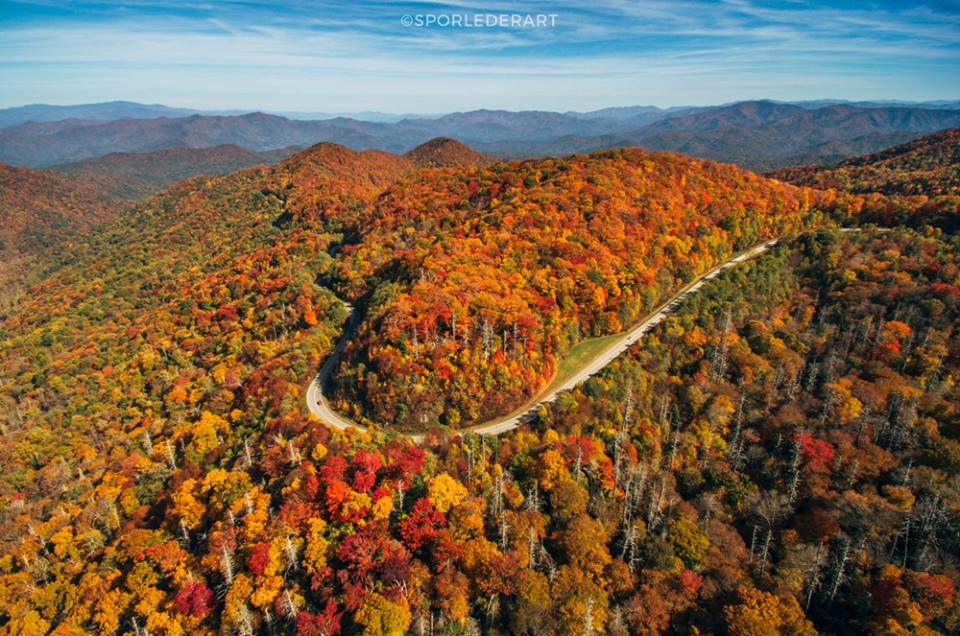

The ideological shift in the New Environmentalism represents a historic alliance of conservation with the doctrines of industrial growth capitalism – which is to say, this can no longer be called conservation in the traditional sense. It has not arisen in a vacuum, but is the logical culmination of 30 years of corporatization of the Big Greens, as enviros starting in the 1980s degenerated into a professionalized, business-funded interest group and began to operate like the businessmen they once saw as the adversary. Consider that the president and CEO of the Nature Conservancy today, Mark Tercek, is a former managing director and partner at Goldman Sachs.
The advent of the New Environmentalism frames a central conflict to unfold in coming years in the conservation community. What happens to wilderness in a world where it is managed for the economic benefit of the “widest number of people” and not for the health of the inhabitants of the wild? And what if, as Leon Kolankiewicz notes, large parts of wild nature are found irrelevant to “thriving economies”? Whither wilderness if industrial capitalism’s expansion is our only measure of its value? And overarching all this: What happens to human beings – psychologically, spiritually, morally – when we no longer have an escape from the confines of our technological termite hill?
Updated 3 July 2021













Pingback: Wolves Howl in 21 Different Tongues | WilderUtopia.com
Pingback: Killing Washington's Protected Wolves for Rancher's Bottom Line | WilderUtopia.com
Pingback: Ecological Amnesia: Life Without Wild Things | WilderUtopia.com
Pingback: Rewilding the Human Family: Staying Interconnected in Modern Times
Pingback: We Need To Clean up Our Oil Act and Introduce Transportation Alternatives – Bicycle-Pedestrian Infrastructure, Trains, Trams, Battery Operated Public Buses | digesthis